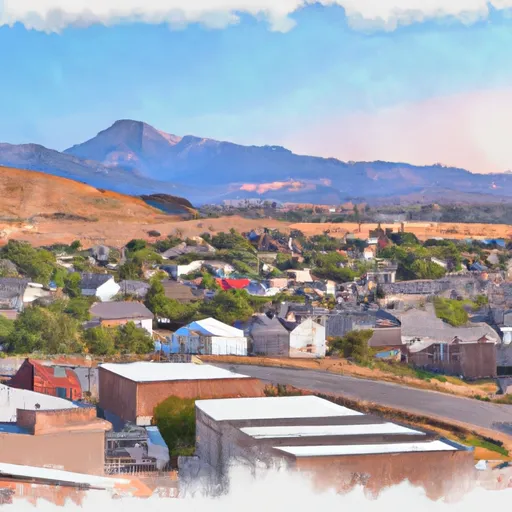-
 Snoflo Premium
Snoflo Premium
Get unlimited access to all our content
With no Ad interruptions! - Start Your Free Trial Login with existing account
Morgan
Eden Index
Climate
8.5
•
Recreation
2.9
•
Community
3.4
•
Safeguard
5.3/10

Morgan, Utah is a picturesque city located in Morgan County, nestled in the northern part of the state. The climate in Morgan is classified as semi-arid, with hot summers and cold winters. Summers are typically hot and dry, with temperatures reaching the mid-90s Fahrenheit, while winters are cold and snowy, with temperatures often dropping below freezing. The city experiences a moderate amount of precipitation throughout the year, with most of it falling as snow during the winter months.
The hydrology constituents in Morgan are primarily influenced by the Weber River, which flows through the city. This river provides a valuable water source for both recreational activities and agricultural purposes. There are also several reservoirs in the area, including East Canyon Reservoir and Lost Creek Reservoir, which offer opportunities for boating, fishing, and other water-based activities.
Outdoor enthusiasts will find a variety of recreational opportunities in Morgan. The nearby mountains offer fantastic hiking and biking trails, perfect for exploring the natural beauty of the area. During the winter months, residents and visitors can enjoy skiing and snowboarding at the nearby Snowbasin and Powder Mountain ski resorts. Additionally, there are several campgrounds, picnic areas, and wildlife viewing areas that allow visitors to immerse themselves in the scenic landscapes of Morgan, Utah.
What is the Eden Index?
The Snoflo Eden Index serves as a comprehensive rating system for regions, evaluating their desirability through a holistic assessment of climate health, outdoor recreation opportunities, and natural disaster risk, acknowledging the profound impact of these factors on livability and well-being.
Climate Health Indicator (CHI): 8.5
Morgan receives approximately
551mm of rain per year,
with humidity levels near 63%
and air temperatures averaging around
9°C.
Morgan has a plant hardyness factor of
5, meaning
plants and agriculture in this region thrive during a short period during spring and early summer. Most
plants will die off during the colder winter months.
By considering the ideal temperature range, reliable water supplies, clean air, and stable seasonal rain or snowpacks, the Climate Health Indicator (CHI) underscores the significance of a healthy climate as the foundation for quality living.
A healthy climate is paramount for ensuring a high quality of life and livability in a region, fostering both physical well-being and environmental harmony. This can be characterized by ideal temperatures, reliable access to water supplies, clean air, and consistent seasonal rain or snowpacks.
Weather Forecast
Streamflow Conditions
Weber
Area Rivers
Weber
Snowpack Depths
Weber
Reservoir Storage Capacity
Weber
Groundwater Levels
Recreational Opportunity Index (ROI): 2.9
The Recreational Opportunity Index (ROI) recognizes the value of outdoor recreational options, such as parks, hiking trails, camping sites, and fishing spots, while acknowledging that climate plays a pivotal role in ensuring the comfort and consistency of these experiences.
Access to outdoor recreational opportunities, encompassing activities such as parks, hiking, camping, and fishing, is crucial for overall well-being, and the climate plays a pivotal role in enabling and enhancing these experiences, ensuring that individuals can engage in nature-based activities comfortably and consistently.
Camping Areas
| Campground | Campsites | Reservations | Toilets | Showers | Elevation |
|---|---|---|---|---|---|
| Albion Basin | 18 | 9,444 ft | |||
| Spruces | 105 | 7,363 ft | |||
| East Canyon State Park | 31 | 5,758 ft | |||
| Redman | 40 | 8,318 ft | |||
| Granite Flat | 52 | 6,756 ft | |||
| Tanners Flat | 34 | 7,208 ft |
Nearby Ski Areas
Catastrophe Safeguard Index (CSI):
The Catastrophe Safeguard Index (CSI) recognizes that natural disaster risk, encompassing floods, fires, hurricanes, and tornadoes, can drastically affect safety and the overall appeal of an area.
The level of natural disaster risk in a region significantly affects safety and the overall livability, with climate change amplifying these risks by potentially increasing the frequency and intensity of events like floods, fires, hurricanes, and tornadoes, thereby posing substantial challenges to community resilience and well-being.
Community Resilience Indicator (CRI): 3.4
The Community Resilience Indicator (CRI) recognizes that education, healthcare, and socioeconomics are crucial to the well-being of a region. The CRI acknowledges the profound impact of these elements on residents' overall quality of life. By evaluating educational resources, healthcare accessibility, and economic inclusivity, the index captures the essential aspects that contribute to a thriving community, fostering resident satisfaction, equity, and social cohesion.

